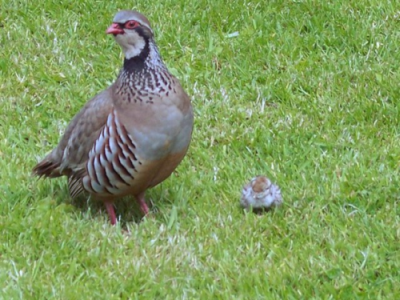A paper by Lorenzo Pérez-Rodríguez, Roger Jovani and François Mougeot in Proceedings B, “Fractal geometry of a complex plumage trait reveals bird’s quality“, claims that the measurement of the fractal dimension of a red-legged partridge’s chest plumage is a good indicator of its health.
I know what you’re thinking: another ‘non-mathematicians pick trendy term to describe something rather different’ story, but actually the authors do quite a good job of explaining and justifying their method. I’m convinced!
Plumage patterns are the product of reaction-diffusion systems which probably don’t really produce fractal dimension, but the researchers needed a fairly easy and consistent way of measuring the complexity of patterns. A healthy bird can produce more melanin, which can produce more complicated patterns. For the level of detail needed, the researchers say that the box-counting method of computing fractal dimension is a quick way of measuring the effect they’re looking for.
Paper: Fractal geometry of a complex plumage trait reveals bird’s quality, by Lorenzo Pérez-Rodríguez, Roger Jovani and François Mougeot, in Proceedings of the Royal Society B.
via Slashdot
